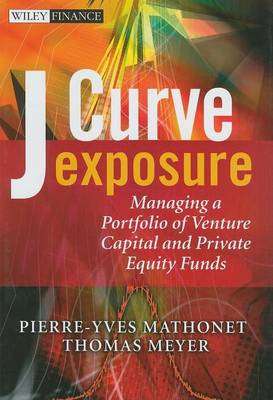The Wiley Finance
1 primary work • 4 total works
Book 566
Beyond the J Curve provides the answers to key questions, including:
- Why 'top-quartile' promises should be taken with a huge pinch of salt and what it takes to select superior fund managers?
- What do limited partners need to consider when designing and managing portfolios?
- How one can determine the funds' economic value to help addressing the questions of 'fair value' under IAS 39 and 'risk' under Basel II or Solvency II?
- Why is monitoring important, and how does a limited partner manage his portfolio?
- How the portfolio's returns can be improved through proper liquidity management and what to consider when over-committing?
- And, why uncertainty rather than risk is an issue and how a limited partner can address and benefit from the fast changing private equity environment?
Beyond the J Curve takes the practitioner's view and offers private equity and venture capital professionals a comprehensive guide making high return targets more realistic and sustainable. This book is a must have for all parties involved in this market, as well as academic and students.
* Techniques for track record analysis and other tools to help limited partners in their due diligence. * Approaches to dealing with uncertainty, the relevance of real options, and co-investments and side funds as advanced portfolio management techniques. * Questions related to limited partner decision making fallacies and how to manage portfolios of VC funds. * Securitization backed by portfolios of investments in private equity funds. Real life case studies illustrate the issues relevant for the practitioner.
Mastering Illiquidity
by Thomas Meyer, Peter Cornelius, Christian Diller, and Didier Guennoc
With risk-free interest rates and risk premiums at record lows, many investors are turning to illiquid assets, such as real estate, private equity, infrastructure and timber, in search of superior returns and greater portfolio diversity. But as many analysts, investors and wealth managers are discovering, such investments bring with them a unique set of risks that cannot be measured by standard asset allocation models. Written by a dream team of globally renowned experts in the field, this book provides a clear, accessible overview of illiquid fund investments, focusing on what the main risks of these asset classes are and how to measure those risks in today's regulatory environment.
- Provides solutions for institutional investors in need of guidance in today's regulatory environment
- Offers detailed descriptions of risk measurement in illiquid asset classes, illustrated with real life case studies
- Helps you to develop reliable risk management tools while complying with the regulations designed to contain the individual and systemic risks arising from illiquid investments
- Features real-life case studies that capture an array of risk management scenarios you are likely to encounter
Advanced guidance for institutional investors, academics, and researchers on how to manage a portfolio of private capital funds
The Art of Commitment Pacing: Engineering Allocations to Private Capital provides a much-needed analysis of the issues that face investors as they incorporate closed ended-funds targeting illiquid private assets (such as private equity, private debt, infrastructure, real estate) into their portfolios. These private capital funds, once considered "alternative" and viewed as experimental, are becoming an increasingly standard component of institutional asset allocations.
However, many investors still follow management approaches that remain anchored in the portfolio theory for liquid assets but that often lead to disappointing results when applied to portfolios of private capital funds where practically investors remain committed over nearly a decade.
When planning for such commitments, investment managers and researchers are faced with practical questions such as:
- How to measure and control the real exposure to private assets?
- How to forecast cash-flows for commitments to private capital funds?
- What ranges for their returns and lifetime are realistic, and how can the investor’s skill be factored in?
- Over which dimensions should a portfolio be diversified and how much diversification is enough?
- How can the impact of co-investments or secondaries be modelled?
- How to design pacing plans that lead to resilient and efficient portfolios?
- What stress scenarios should be considered and how can they be applied?
These are just examples of the many questions for which answers are provided. The Art of Commitment Pacing describes established and new methodologies for building up and controlling allocations to such investments. This book offers a systematic approach for building up and controlling allocations to such investments.
The Art of Commitment Pacing is a valuable addition to the libraries of investment managers, as well as portfolio and risk managers involved in institutional investment. The book will also be of interest to advanced students of finance, researchers, and other practitioners who require a detailed understanding of forecasting and portfolio management methodologies.



